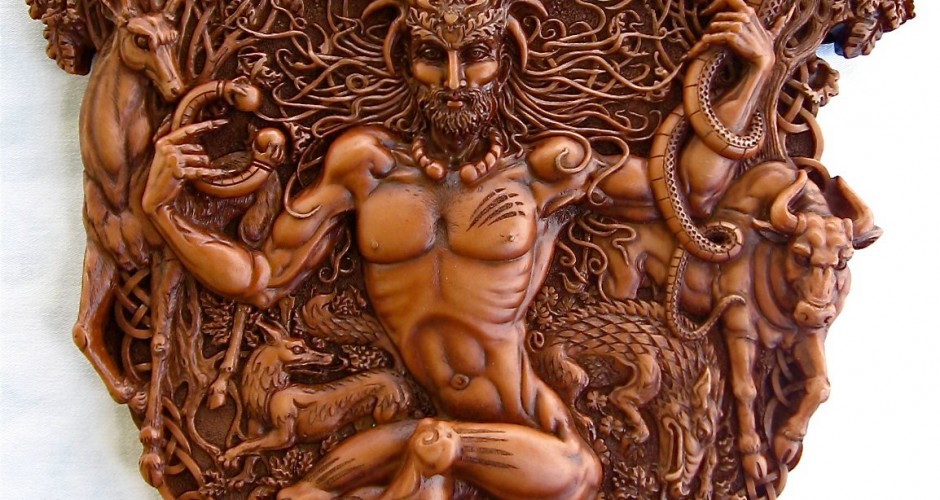 Ancient Europe was a cradle to polytheist religions, such as those of the city states of Greece and Rome, to those of the assorted tribes of Celtic, Germanic, Slavic and Baltic peoples to name but a few. A widespread misconception exists that polytheism was overwhelmed more than fifteen centuries ago and replaced by the monotheism of the Church and, at certain points in the history of some countries, Islam.
Ancient Europe was a cradle to polytheist religions, such as those of the city states of Greece and Rome, to those of the assorted tribes of Celtic, Germanic, Slavic and Baltic peoples to name but a few. A widespread misconception exists that polytheism was overwhelmed more than fifteen centuries ago and replaced by the monotheism of the Church and, at certain points in the history of some countries, Islam.
Whilst monotheism certainly became the dominant creed of European royalty and aristocracy, it took a good deal longer to filter down to the peasantry in any meaningful sense. Indeed, some historians suggest that in many rural areas Christianity did not so much replace polytheism as merge with it and produce what is really more of a fusion religion than pure monotheism.
Emperor Constantine (center) and the Fathers of the First Council of Nicaea of 325 as holding the Niceno–Constantinopolitan Creed
Even amongst the educated upper classes the devotion to the Nicene Creed was often weak, as often as not a simple veneer over plain old fashioned avaricious materialism, but also an unwitting inspirer of interest in those very faiths which it had sought to amalgamate and supersede.
An example of the resurgence of polytheism amongst the intelligentsia was Georgius Gemistus Pletho, a son of Constantinople. Born there in 1355, he publicly advocated a return to the worship of the Greek Gods and founded the Platonic Academy in Florence with the financial support of the de Medici Family.
Curiously the Church seemed to have largely turned a deaf ear to his campaign. One of his better known followers was Lord Sigismondo Malatesta, the much maligned Wolf of Rimini who created a pagan tomb to house the old man’s remains when he had finally passed away. He also built the Tempio Malatestiano, the cathedral of Rimini, which Pope Pius II reviled as,
“full of pagan gods and profane things“.
As well as sporadic historical upsurges in Europe, the last 300 or so years has seen a steadier and more consistent resurgence of interest in ancient cultures and mythologies and, in due course, actual spiritual devotion to the ancient Gods. This lead to some intriguing developments across Europe, and from there the New World.
For example, large areas of the city of Bath were based on the mystical beliefs in Druidry and geometry held by the architect John Wood the Elder who guided the building projects between the 1720s and 1750s.
Polytheism inspired many well known writers over the last few centuries. Correspondence shows that the author and biographer Thomas Jefferson Hogg and the poets Percy Shelley and Thomas Love Peacock held rites in honour of the Romano-Greek deity Pan.
Shelley himself wrote, “I am glad that you do not neglect the rites of the true religion. Your letter awoke my sleeping devotions, and the same evening I ascended alone the high mountain behind my house, and suspended a garland, and raised a small turf-altar to the mountain-walking Pan”.
At times the exploration of European polytheism has drawn people into harmony with Hinduism. For example, a prayer was read in honour of Kali at the 1878 Pontypridd Eisteddfod (a poetry festival inspired by ancient Welsh stories of bards). The oldest known Hindu structure in Britain resides in my own home country of Suffolk. It is
a pyramid-shaped tomb built by Edward Moor (1771-1848), a young scholar and soldier who served in the Raj and returned home to the village of Little Bealings in 1805. Having converted to the religion, he decorated the structure with part of his collection of Hindu statuary, and also published  ‘The Hindu Pantheon’ five years after his return home.
‘The Hindu Pantheon’ five years after his return home.
Whilst some European polytheists and pantheists have held prominent roles in society, not all have been well tolerated by their neighbours. When the Soviet Bloc fell, religion generally began to flourish once again, polytheist beliefs amongst them. In 2011 members of the Orthodox Church, so long the victim of Soviet oppression themselves, vandalized a
modern polytheist temple in the Ukraine and hospitalized the guardian of the site. This is not to suggest that pagans are benighted innocents, given that a minority get tangled up in some rather dodgy politics, but this particular branch was quite innocently going about their legal rights of worship.
There is a way to go yet in establishing a genuine equality of religions, but interest in polytheism is deepening in the West and, by its very nature, has a natural sympathy with Hinduism. The potential to build bridges between Hinduism, Western polytheism, and the Eastern forms of polytheism ~ such as Shinto and Taoism ~ can but serve to strengthen the legal and social bonds that enable pluralism to grow and keep intolerant zealotry at bay.






































Dear Admin,
can you please tell me where you have found that image of cernunnos????? plz